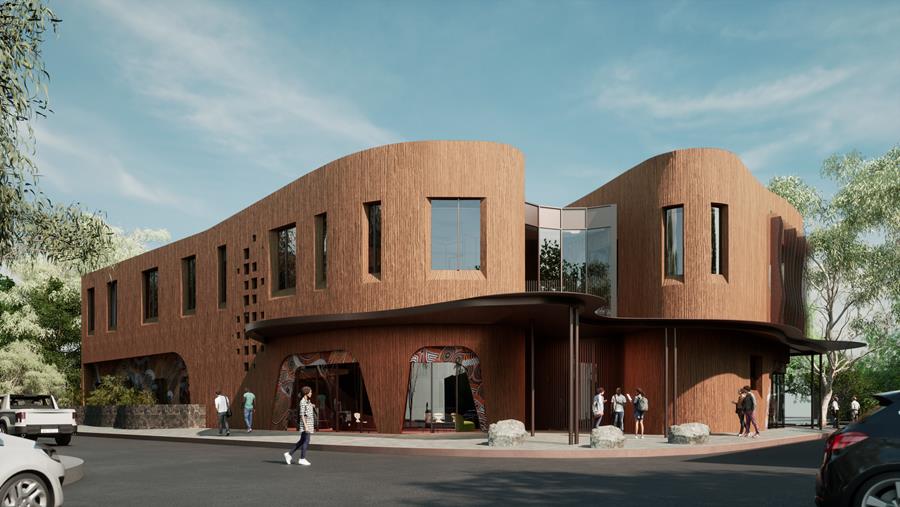Electronic monitoring
The ACT Government is planning a staged introduction of electronic monitoring for community-based orders in the justice system.
The first stage will focus on Intensive Correction Orders, parole, limited bail, and leave permits, while the second stage will focus on new schemes such as home detention, early release, post-release supervision, expanded bail, and intensive monitoring for domestic and family violence perpetrators.
The implementation pends legislation, funding, and procurement, and the government is working with domestic family violence stakeholders to ensure victims are safe.
The Justice and Community Safety Directorate will seek proposals for electronic monitoring solutions and indicative costs from potential suppliers, and make necessary legislative and training, resourcing and operational changes for ACT Corrective Services, ACT Courts, the Sentence Administration Board and ACT Policing.
Chief Minister Andrew Barr said electronic monitoring will bring the ACT into line with other Australian jurisdictions. It can reduce physical reporting requirements for offenders and incarceration rates, and improve community safety.
“Electronic monitoring has great potential for increasing the likelihood of a person’s successful transition though the justice system and consequently not reoffending,” Mr Barr and other ministers said in a statement. “The staged implementation of electronic monitoring will allow the system to progressively roll out, ensuring stakeholders and the community are confident in its effectiveness before it’s used for higher-risk offenders.”
Indigenous incarceration
The first phase of an independent review highlights the positive impacts of ACT Government programs on reducing First Nations incarceration rates, such as culturally appropriate sentencing and bail support programs.
However, the review also identifies significant areas for improvement, particularly in fully implementing the recommendations from the Australian Law Reform Commission’s 2018 ‘Pathways to Justice’ report.
The ACT has implemented 80 per cent of the ALRC’s recommendations, including the Yarrabi Bamirr family support program, the Ngurrambai bail support program, the Galambany Circle Sentencing Court, the Yhurwan Bullan women’s healing program, and the Yhurwan Ghuda youth diversionary program.
The review, published by the University of Technology Sydney’s Jumbunna Institute for Indigenous Education and Research, acknowledges that the Indigenous imprisonment rate has reduced by 5 per cent in the ACT since 2017, while the national rate increased by 10 per cent.
However, over-representation of First Nations people in the ACT justice system has increased by 27 per cent, due to a more rapid decline in non-Indigenous imprisonment rates.
The report calls for more co-ordinated and transparent decision-making, greater support for Aboriginal-led initiatives, and better data collection to address systemic issues.
The second phase of the review, expected later this year, will develop additional recommendations to further reduce First Nations over-representation in the ACT’s criminal justice system.
Attorney-General Shane Rattenbury and minister for Aboriginal and Torres Strait Islander Affairs Rachel Stephen-Smith say the justice system must be culturally appropriate, community-led, and address the root causes of over-representation, while acknowledging the ongoing challenges of racism and the legacy of colonisation.
Indigenous youth services
The new home of the Gugan Gulwan Youth Aboriginal Corporation is expected to open in January.
The facility, funded by the ACT Government, will enable Gugan Gulwan to expand its services for Aboriginal and Torres Strait Islander children, youth, and families in a culturally appropriate and familiar setting.
The design of the building has been culturally led, incorporating traditional and contemporary practices, with a central gathering place and a fire pit, and artwork will tell stories from Aboriginal history.
The building will also be environmentally sustainable, achieving a 5-star Green Star rating, and using 65 per cent less energy than similar builds.
Damien Coke has been appointed as the new CEO, after Kim Davison’s retirement. Mr Coke is a Yorta Yorta, Wemba Wemba, and Yuin man, and is an experienced senior manager and administrator.
Resonating concrete
The ACT Government has committed to using low carbon concrete in all future government construction projects, where appropriate.
The ‘Low Carbon Concrete Policy’ aims to reduce emissions without adding significant costs to construction, Shane Rattenbury, Minister for Water, Energy and Emissions Reduction, said.
Low carbon concrete, which replaces traditional cement with lower-emissions material like fly-ash, has already been used in major projects such as the new Canberra Hospital expansion and in preparation for Light Rail Stage 2A.
The policy will be implemented in phases starting on 1 January 2025, requiring designers, engineers, and builders to include low carbon concrete options in government projects.
Mr Rattenbury said the policy aligns with broader industry commitments to achieve net zero emissions by 2050, and supports the 10-year ACT Sustainable Building Pathway.
Tree change
The ACT Government will amend tree regulations to reduce the burden on homeowners while supporting its tree planting program, which has exceeded targets, city services minister Tara Cheyne said.
Changes to the Urban Forest Act 2023, beginning next year, will require homeowners to plant two trees for each tree removed, unless they maintain 30 per cent canopy cover on their block. The Application processes will be streamlined.
The ACT has surpassed its target under the Urban Forest Strategy of 54,000 trees: more than 23,000 were planted in 2023–24, and 65,000 trees since June 2020. Ms Cheyne said the ACT is “in a good position” to achieve its target of 30 per cent canopy coverage by 2045.
From the end of this year, fewer plane trees will be planted, because some people are allergic to them, their roots damage pavement and infrastructure, and people can trip over their seeds.
The tree species list will be updated to incorporate new species deemed suitable and remove unsuitable ones. The ACT Budget allocates $5.8 million for tree care and city maintenance, including support for the urban forest.



